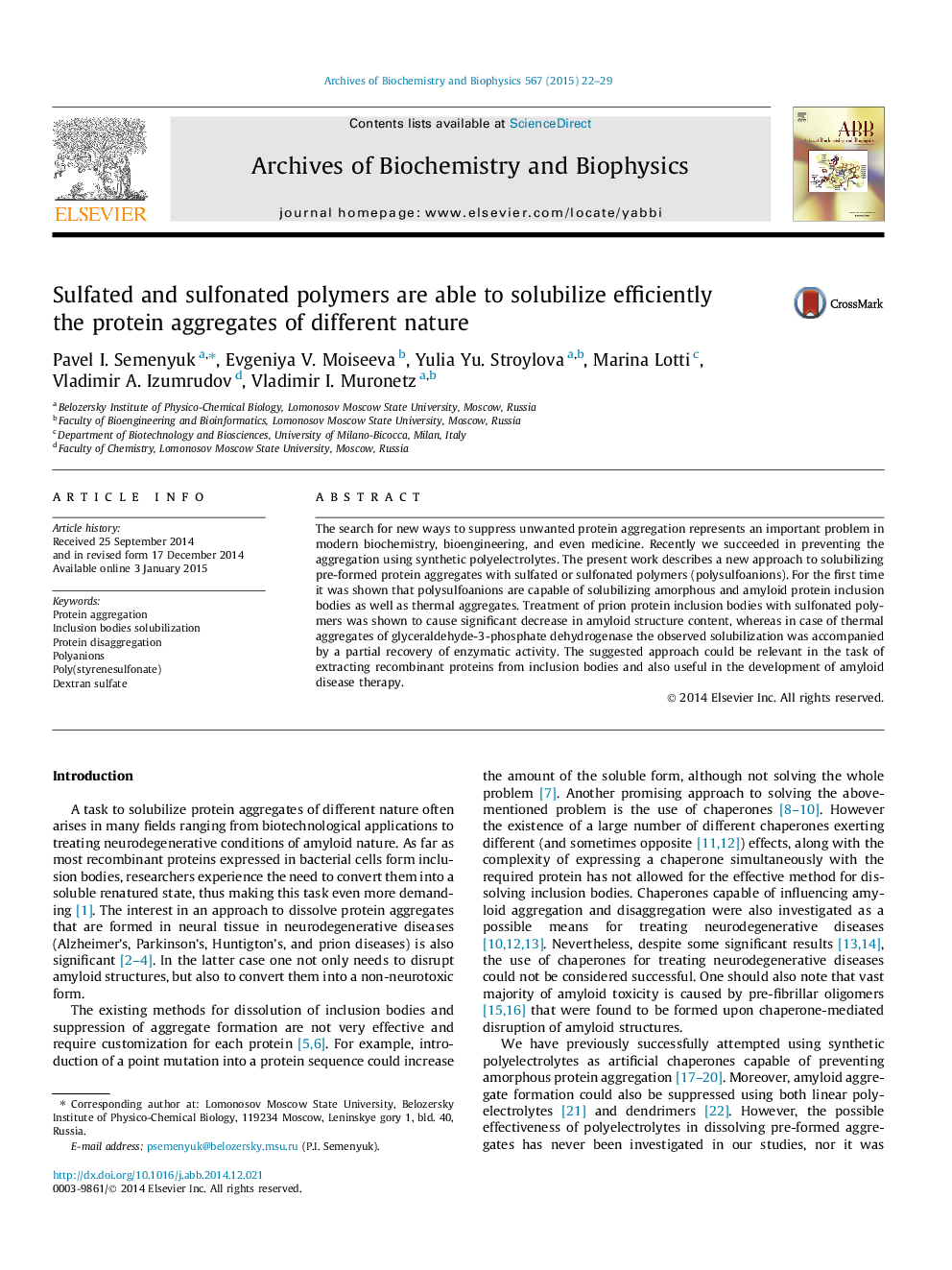| Article ID | Journal | Published Year | Pages | File Type |
|---|---|---|---|---|
| 1925074 | Archives of Biochemistry and Biophysics | 2015 | 8 Pages |
•Polysulfoanions are capable of solubilizing protein aggregates of different nature.•Treatment of prion protein inclusion bodies reduces amyloid structure content.•Dissolution of thermal aggregates is accompanied by partial reactivation of enzyme.
The search for new ways to suppress unwanted protein aggregation represents an important problem in modern biochemistry, bioengineering, and even medicine. Recently we succeeded in preventing the aggregation using synthetic polyelectrolytes. The present work describes a new approach to solubilizing pre-formed protein aggregates with sulfated or sulfonated polymers (polysulfoanions). For the first time it was shown that polysulfoanions are capable of solubilizing amorphous and amyloid protein inclusion bodies as well as thermal aggregates. Treatment of prion protein inclusion bodies with sulfonated polymers was shown to cause significant decrease in amyloid structure content, whereas in case of thermal aggregates of glyceraldehyde-3-phosphate dehydrogenase the observed solubilization was accompanied by a partial recovery of enzymatic activity. The suggested approach could be relevant in the task of extracting recombinant proteins from inclusion bodies and also useful in the development of amyloid disease therapy.
Graphical abstractFigure optionsDownload full-size imageDownload high-quality image (188 K)Download as PowerPoint slide
